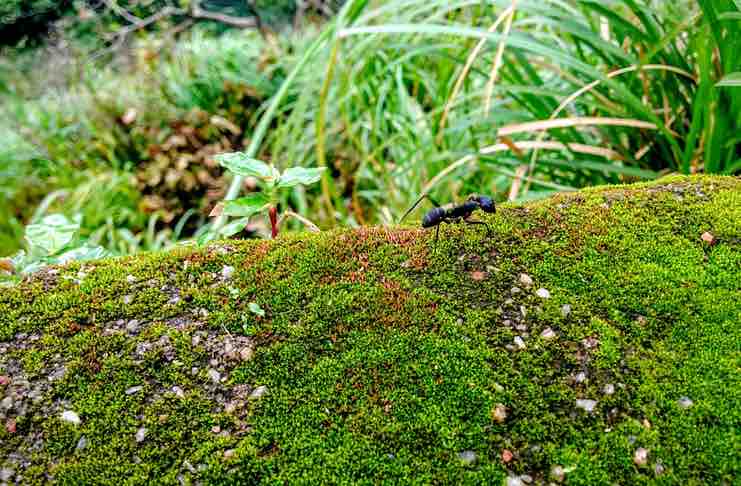“What breed of ant is that?”
While that might not be the first thing that comes to mind when you spot an ant crawling across your tabletop or just along its merry way on the ground, it’s nevertheless a worthwhile subject to consider when strolling or picnicking at Central Park.
There are thousands of ant species worldwide, and it’s essential to familiarize yourself with them if you want to avoid the “problematic” ants. Of course, we don’t mean all the thousands of ants in the world. Rather, learn about the ones most common in your city and neighboring area, to get a fair idea about what you might expect.

And if you live in New York City, or visiting the Big Apple, what better green area to focus on than Central Park? The infamous park is home to dozens of species of ant, and below, you’ll find the most common, how to spot them, and what damage they risk doing to your home.
Most Common Ants in Central Park:
1. Pharaoh Ant
Usually measuring no more than 1/16 of an inch in size, pharaoh ants are recognizable by their unusual coloring. Pharaoh ants are typically light yellow or red in color and leave behind a distinctive scent trail, to guide them between their food source, and their shelter.
Pharaoh ants can be quite a nuisance for homeowners, thanks to their nest-building habit in every single area they inhabit. Not only that, but pharaoh ants will also reproduce rapidly, which means that once they’re in the house, you could be dealing with a lot of them in a very short amount of time.
2. Pavement Ant
You know pavement ants since they tend to make their colonies in the cracks in the pavement (though they will move into homes if they offer particularly attractive food sources). These ones can measure up to 1/8th of an inch and are dark brown. Pavement ants bite or sting very rarely, though they can still pose a threat to your food.
Check out this clip to learn more about the Pavement ant:
3. Field Ant
Field ants are not ones to be easily dismissed. Growing up to 3/8ths of an inch, they come in yellow, red, black, and brown patterns. Although they much prefer nesting outside, they may come indoors, looking for food. The big issue with field ants is that, when angered, they will bite and inject a deeply painful venom in their victims.
4. Carpenter Ant
Carpenter ants are a big concern for homeowners since they mostly make their nest inside moist, rotting wood. This can mean severe structural damage very quickly. Not to mention how tricky they are to get out, once they’ve set up shop inside your home.
Carpenter ants are, however, easier to identify. Since they can grow up to ½ an inch and have deep red bodies, you can usually pick them apart from other ants.
5. Little Black Ant
These cutesy-sounding critters live in huge colonies that usually span over two thousand members. In Central Park, they can be found under rocks, or in the grass, though they prefer dry areas to damp. Though they typically will avoid coming indoors, they might become a problem, in the sense of contaminating your food.
6. Citronella Ant
You’ll know the citronella ants by their bright yellow-orange coloring, but also by the light citrusy scent they give off when crushed (though don’t knowingly crush them if they’re not bothering you!).
It’s unlikely to find a citronella ant in your home, as they prefer the outdoors, but you may observe them along the concrete in Central Park.
Watch this to learn a bit more about the Citronella Ant:
7. Argentine Ant
This last breed of ant is considered a nuisance because of its immense colonies. (A single one can include thousands of members and even hundreds of queens.) The Argentine ant likes to live in moist areas, and as such, can rapidly barge into your home, which you definitely do not want. Though it can live in parks, as well.
Bottom line, pay attention when you’re walking about, but also indoors, and if you suspect an ant infestation on your property, act fast. Hire a professional pest removal expert, such as Magic Touch Exterminating and Wildlife Control. Remember, the more you wait, the more damage you are inviting into your home (not to mention allowing the ant colony to grow). So don’t wait.
Alex is a computer geek, programmer, who loves traveling. Not the usual mix, but Alex is always with his laptop – no matter how high the mountain he’s hiking on. On every peak he reaches, he writes a story that captures it all.










 Sarah Knapp is a Brooklyn based entrepreneur whose love for the outdoors and community building led her to the October 2013 creation of OutdoorFest. She has a BA in History, is a Wilderness First Responder and a NY state hiking, camp and boating guide. Her proudest achievement to date is reading the Aeneid in Latin.
Sarah Knapp is a Brooklyn based entrepreneur whose love for the outdoors and community building led her to the October 2013 creation of OutdoorFest. She has a BA in History, is a Wilderness First Responder and a NY state hiking, camp and boating guide. Her proudest achievement to date is reading the Aeneid in Latin.  Allison was one of our first top writers and Chief Editor but is no longer working with offMetro. Allison is a native New Yorker, who has lived in Rome, Tuscany, Melbourne, Toronto and Los Angeles. She frequently contributed travel pieces to Family Travel Forum, using her own children as guinea pigs as they travel the globe. She never missed a chance to sample local delicacies, as her love for travel goes hand-in-hand with her love for food and wine.
Allison was one of our first top writers and Chief Editor but is no longer working with offMetro. Allison is a native New Yorker, who has lived in Rome, Tuscany, Melbourne, Toronto and Los Angeles. She frequently contributed travel pieces to Family Travel Forum, using her own children as guinea pigs as they travel the globe. She never missed a chance to sample local delicacies, as her love for travel goes hand-in-hand with her love for food and wine.  Josh Laskin is a freelance travel writer and photographer based in the White Mountains of New Hampshire. When he is not at work or on the road, you can find him in the mountains snowboarding, climbing, hiking, fly fishing, mountain biking, and eating bagel bites.
Josh Laskin is a freelance travel writer and photographer based in the White Mountains of New Hampshire. When he is not at work or on the road, you can find him in the mountains snowboarding, climbing, hiking, fly fishing, mountain biking, and eating bagel bites. Annie is a travel writer, environmentalist, and surfer based in Venice, CA. She heads up our West Coast team, keeps our grammatical errors in check, and makes sure our California writers always have a plan for their next adventure. Follow Annie’s travels @annelisemcb.
Annie is a travel writer, environmentalist, and surfer based in Venice, CA. She heads up our West Coast team, keeps our grammatical errors in check, and makes sure our California writers always have a plan for their next adventure. Follow Annie’s travels @annelisemcb. Carly Pifer is a freelance writer who has been known to follow whims inspired by romantic movie scenes or colorful street style shots to India, Japan, Tunisia and Argentina. After stints living in Seoul, Boston, Paris and Los Angeles, writing and searching for something intangible, she landed somewhat steadily in Brooklyn and has begun to find inspiration in her more immediate surroundings.
Carly Pifer is a freelance writer who has been known to follow whims inspired by romantic movie scenes or colorful street style shots to India, Japan, Tunisia and Argentina. After stints living in Seoul, Boston, Paris and Los Angeles, writing and searching for something intangible, she landed somewhat steadily in Brooklyn and has begun to find inspiration in her more immediate surroundings.  Kate E. O’Hara is a New York based freelance writer and photographer who loves all things food—especially the people who make it and market it. Her writing aims to capture the essence of the food experience; the stories that go well beyond a plate of ingredients. In addition to her love of food, Kate is also known to have a hankering for red wine and craft beer. You can also find Kate on Instagram
Kate E. O’Hara is a New York based freelance writer and photographer who loves all things food—especially the people who make it and market it. Her writing aims to capture the essence of the food experience; the stories that go well beyond a plate of ingredients. In addition to her love of food, Kate is also known to have a hankering for red wine and craft beer. You can also find Kate on Instagram